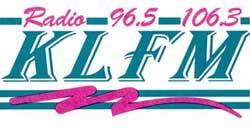
Radio KLFM: emergency broadcaster
Radio KLFM is now an official emergency broadcaster after signing a Memorandum of Understanding with the Minister for Police, Emergency and Bushfire Response Kim Wells MP at the State Control Centre in Melbourne on Wednesday 29 October 2014.
Minister Wells said with the signing of KLFM as an emergency broadcaster, 35 extra towns will receive emergency warnings and information via KLFM.
KLFM General Manager Brad Geier said that the station played a major role during the Black Saturday bush fires keeping listeners informed with emergency information.
“I’m delighted that we, along with Emergency Authorities now have this agreement in place that will ensure accurate and timely information is broadcast during an emergency.”
“Community stations are at the hub of their community with listeners tuning in for local information,” said Minister Wells.
KLFM can be activated at any time by the State Control Centre to provide emergency information to listeners in times of an Emergency.
KLFM have been broadcasting to Bendigo and Central Victoria since 1989. They join UGFM – Radio Murrindindi, Stereo 974, Plenty Valley FM and various other organisations as officially recognised Victorian emergency broadcasters.
Facebook comments